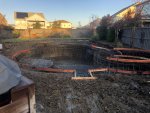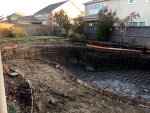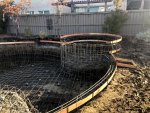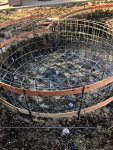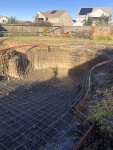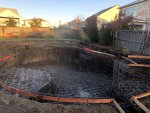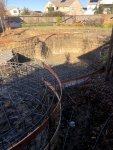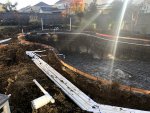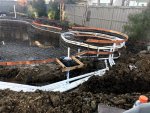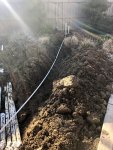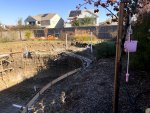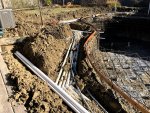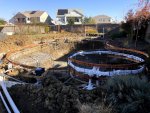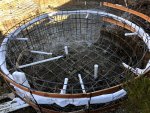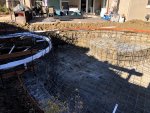Right, nothing should penetrate the pad (pipes, conduit, etc). Those should all go in the dirt surrounding the pad. Then you can add gravel there if you want to keep the dust down. In addition to being able to servicing everything, you want the pad big enough so that you don't have to cram all the components together. They can be installed so close that should you ever need to change one out, you have to change out a slew of perfectly fine ones just because they were all glued in too close together. You want a decent amount of PVC between each component, so that should you need to swap one out, you can cut the PVC, and then glue the new one in using PVC couplers. Maybe even twice. I'm talking about everything, not just the pump and filter, I mean the valves, too.
Here's a read:

www.troublefreepool.com
And here:
Post a picture of your pool equipment layout and plumbing. I'm looking for some layout ideas and would love too see what people are working with. Any issues with your current layout you'd change?

www.troublefreepool.com
Check out some of the pic's in the second link. In any given pic, look at a valve or pump or filter, and see what it would take to replace it, and you'll see what I'm talking about. Some you could cut out, and glue back in with one or two PVC couplers, other's you'd have to replace an entire manifold, including replacing multiple valves, just to replace one. You'll see a lot of pics where they located a valve way too close to a PVC elbow, for no reason, making replacement unnecessarily tough.
But in order to leave enough PVC between everything, you need a big enough pad to accommodate all that, which was the point. And of course you'll need to work this out with the plumber, because they don't usually think about this notion, they just get'er done and leave you with the consequences.
 .
.

